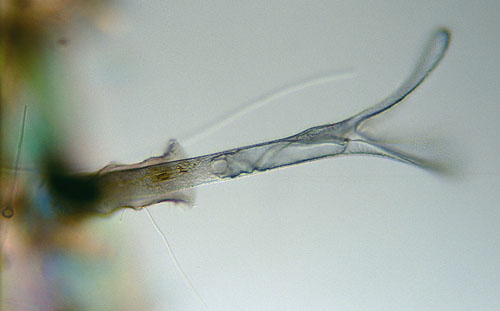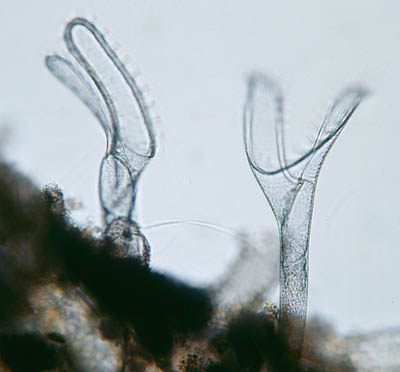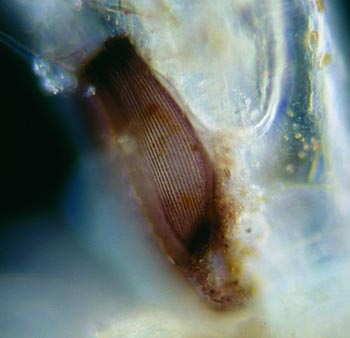|
by Wim van Egmond, The Netherlands |

Folliculina in dark-field illumination. |
|
| Not
only is marine plankton a rich source of subjects for a microscopist. Sessile
organisms are at least as interesting. Organisms that are attached to floating
platforms in harbors are always worth examining. Colonies of Hydrozoan
polyps, red algae, Ectoprocts (moss animalcules) are very interesting study
objects to study the many basic principles of life. And between these larger
animals many interesting protozoa find shelter.
One such micro-organism I only knew from text books is Folliculina, a ciliate that somewhat resembles the well known Stentor. I found it living in its protective tube attached to a colony of Ectoprocts. I thought it would be interesting to photograph the organism. (A quick search on the Internet did not show many images). This was not easy since it lived on the rather thick 'branching' Ectoprocts. I tried to cut off small parts of the Ectoproct 'stems' and carefully placed these on a slide. Then it was a matter of patience before the ciliate would come out of its house. It worked. I could make a series of images that was, although not perfect, good enough to see several of the main features of the organism. It was impossible to show the whole organism since in this species the tube-like house (lorica) had a bend in it. |


